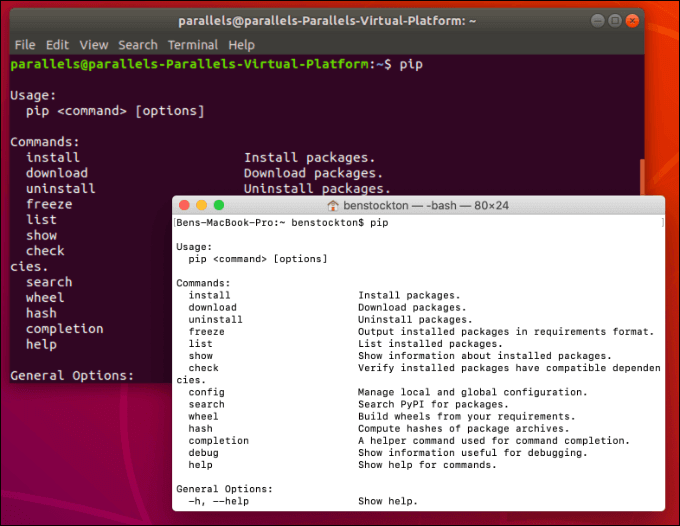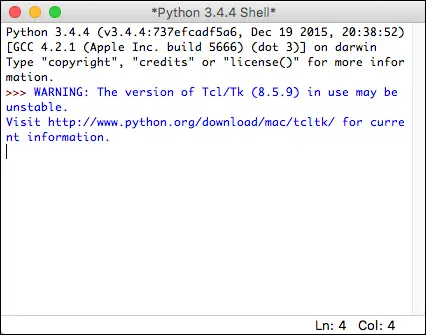This document describes how to install Python 3.6 or 3.8 on Ubuntu Linux machines.

To see which version of Python 3 you have installed, open a command prompt and run
If you are using Ubuntu 16.10 or newer, then you can easily install Python 3.6 with the following commands:
If you’re using another version of Ubuntu (e.g. the latest LTS release) or you want to use a more current Python, we recommend using the deadsnakes PPA to install Python 3.8:
- For most Unix systems, you must download and compile the source code. The same source code archive can also be used to build the Windows and Mac versions, and is the starting point for ports to all other platforms.
- The situation: I'm trying to install pyside on a project using the PyCharm IDE, however it says that it does not support python 3.5 that is installed by default on ubuntu 16.04. It does support python 2.7, however I'd rather not start a new project using python 2. What I've done: So I download python 3.45, extracted it, and I am successful in installing it to a directory using the following.
- If you are using Ubuntu 16.10 or newer, then you can easily install Python 3.6 with the following commands: $ sudo apt-get update $ sudo apt-get install python3.6 If you’re using another version of Ubuntu (e.g. The latest LTS release) or you want to use a more current Python, we recommend using the deadsnakes PPA to install Python 3.8.
If you are using other Linux distribution, chances are you already have Python 3pre-installed as well. If not, use your distribution’s package manager.For example on Fedora, you would use dnf:
Note that if the version of the python3 package is not recent enoughfor you, there may be ways of installing more recent versions as well,depending on you distribution. For example installing the python3.9 packageon Fedora 32 to get Python 3.9. If you are a Fedora user, you might wantto read about multiple Python versions available in Fedora.
Dec 12, 2019 Option 1: Install Python 3 Using apt (Easier) Step 1: Update and Refresh Repository Lists. Open a terminal window, and enter the following: Step 2: Install Supporting Software. Step 3: Add Deadsnakes PPA. Step 4: Install Python 3. Python 3.7.2 That’s how you install Python from its source. Method 2: Installing Python via PPA. If you quickly want to get the latest version of Python installed on Ubuntu and get future updates automatically, then you can install it from the below third-party PPA repository To do that, run the commands below to add the PPA.
Working with Python 3¶
At this point, you may have system Python 2.7 available as well.
This might launch the Python 2 interpreter.
This will always launch the Python 3 interpreter.
Setuptools & Pip¶
The two most crucial third-party Python packages are setuptools and pip.
Once installed, you can download, install and uninstall any compliant Python softwareproduct with a single command. It also enables you to add this network installationcapability to your own Python software with very little work.

Python 2.7.9 and later (on the python2 series), and Python 3.4 and later includepip by default.
To see if pip is installed, open a command prompt and run
To install pip, follow the official pip installation guide - this will automatically install the latest version of setuptools.

Note that on some Linux distributions including Ubuntu and Fedora the pipcommand is meant for Python 2, while the pip3 command is meant for Python 3.
However, when using virtual environments (described below), you don’t need tocare about that.
Pipenv & Virtual Environments¶
The next step is to install Pipenv, so you can install dependencies and manage virtual environments.
A Virtual Environment is a tool to keep the dependencies required by different projectsin separate places, by creating virtual Python environments for them. It solves the“Project X depends on version 1.x but, Project Y needs 4.x” dilemma, and keepsyour global site-packages directory clean and manageable.
For example, you can work on a project which requires Django 1.10 while alsomaintaining a project which requires Django 1.8.
So, onward! To the Pipenv & Virtual Environments docs!
This page is a remixed version of another guide,which is available under the same license.
This article will help you to install Python 2.7.18 on your Ubuntu, Debian and LinuxMint operating systems. At writing time of this article Python 3.4.5 latest stable version is available to download and install.

To install Python 3.4.5 visit following article.
Step 1 – Prerequisites
You must have installed the following prerequisites on your system. Execute the following commands on your system to install all required dependencies to build Python 2.7.
Step 2 – Download Python 2.7
Download Python using following command from python official site. You can also download latest version in place of specified below.
Now extract the downloaded package.

Install Python 3.4 Ubuntu Lts
Step 3 – Compile Python Source
Use below set of commands to compile Python source code on your system using altinstall.
Step 4 – Check Python Version
Install Python 3.4 Ubuntu Debian
Check the latest version installed of python using below command